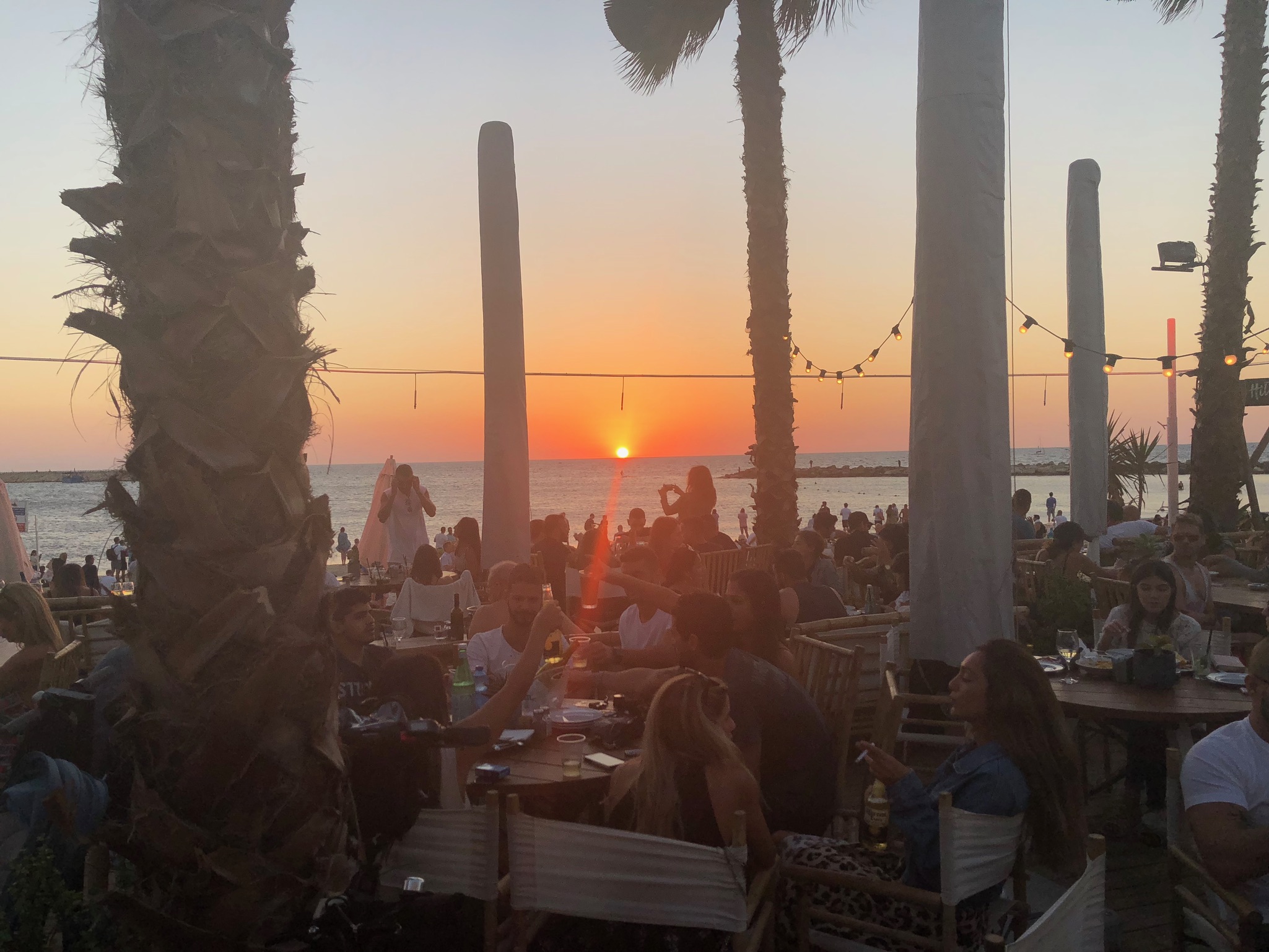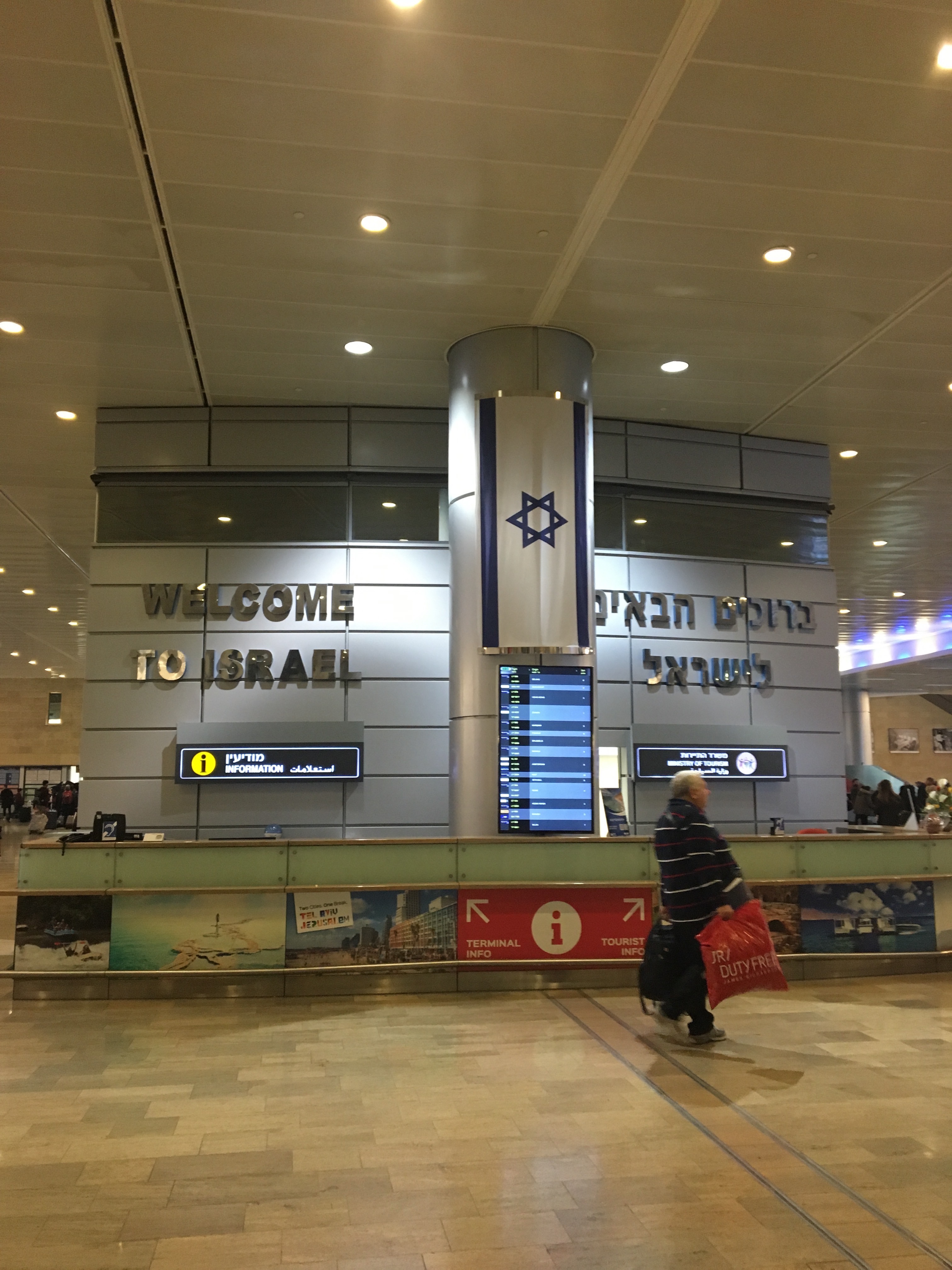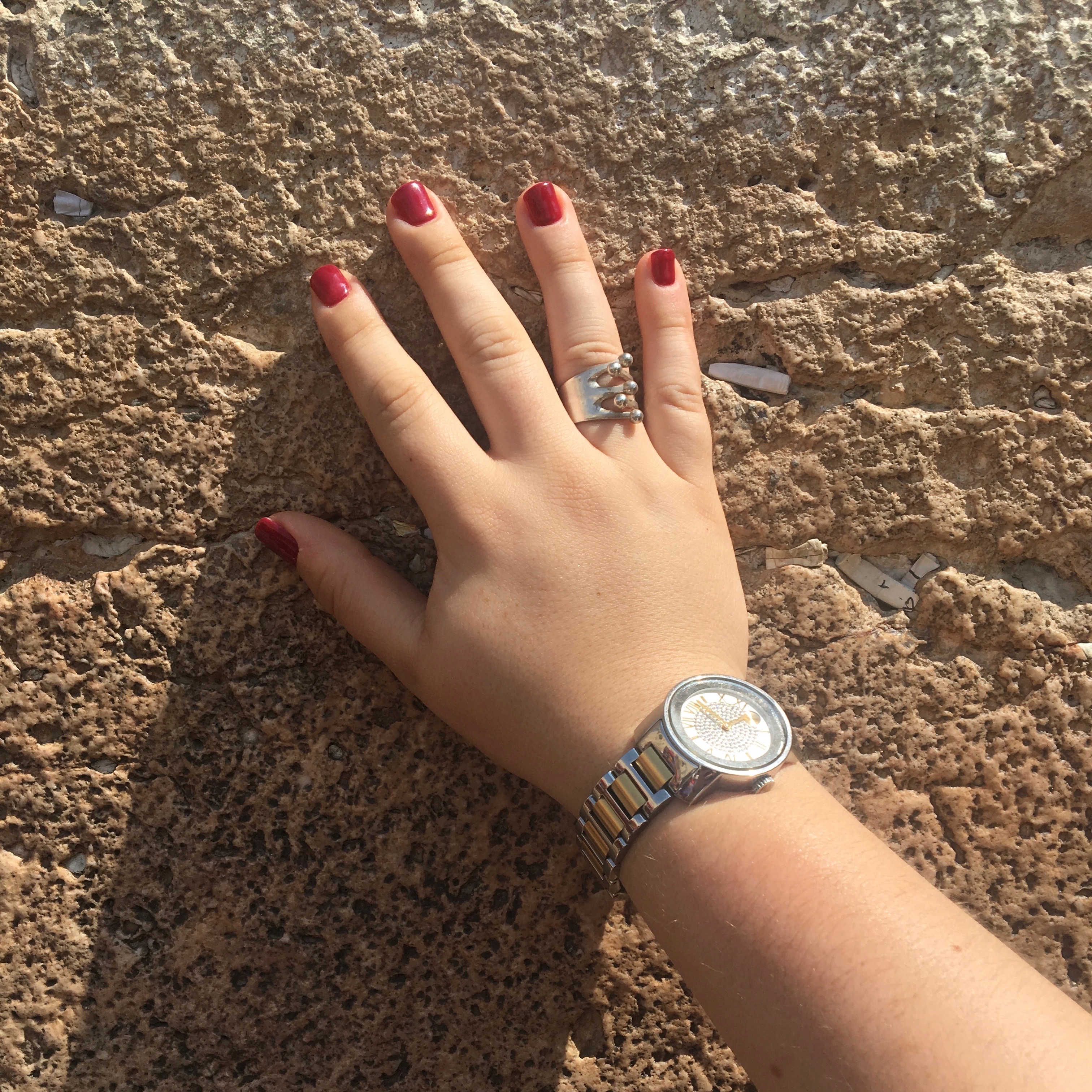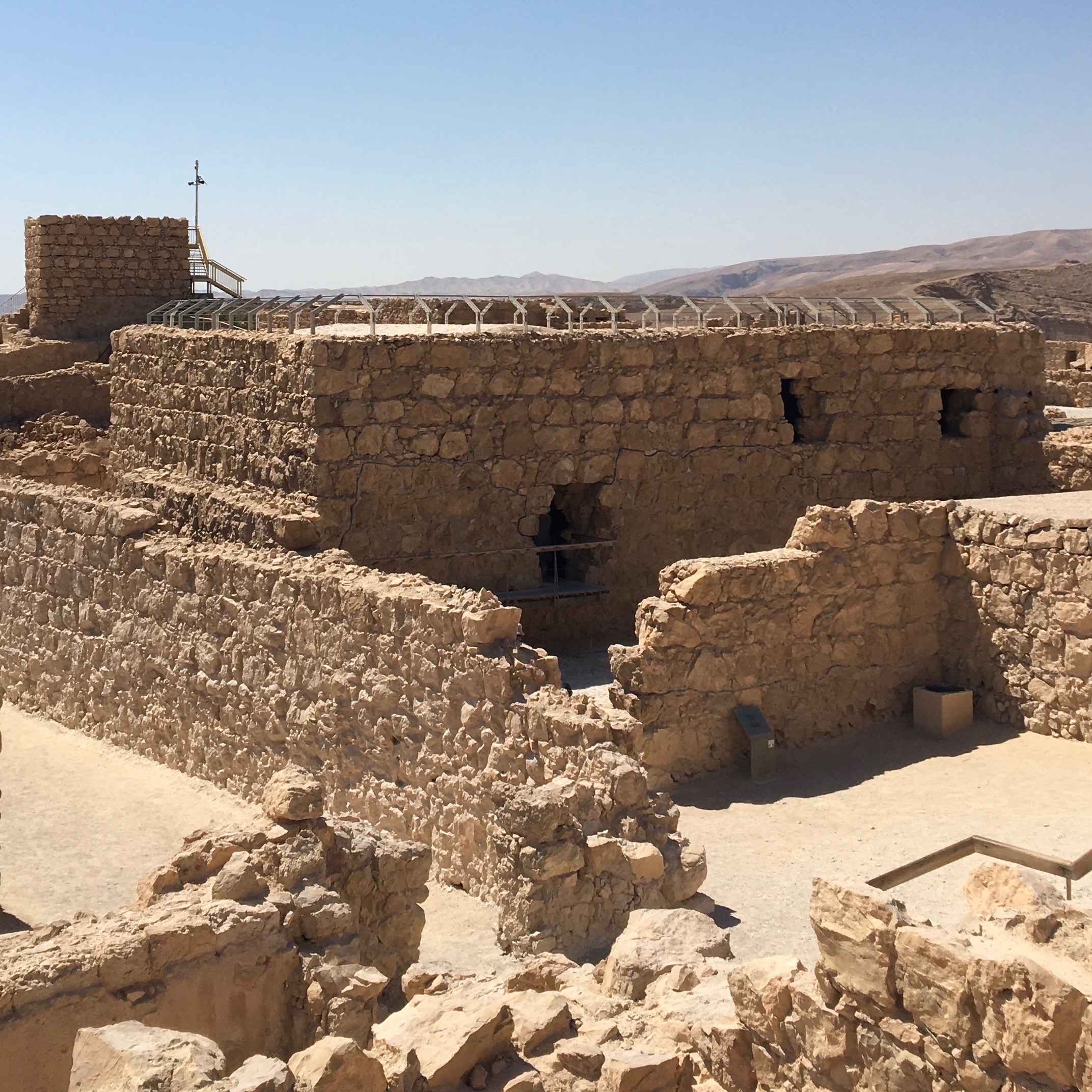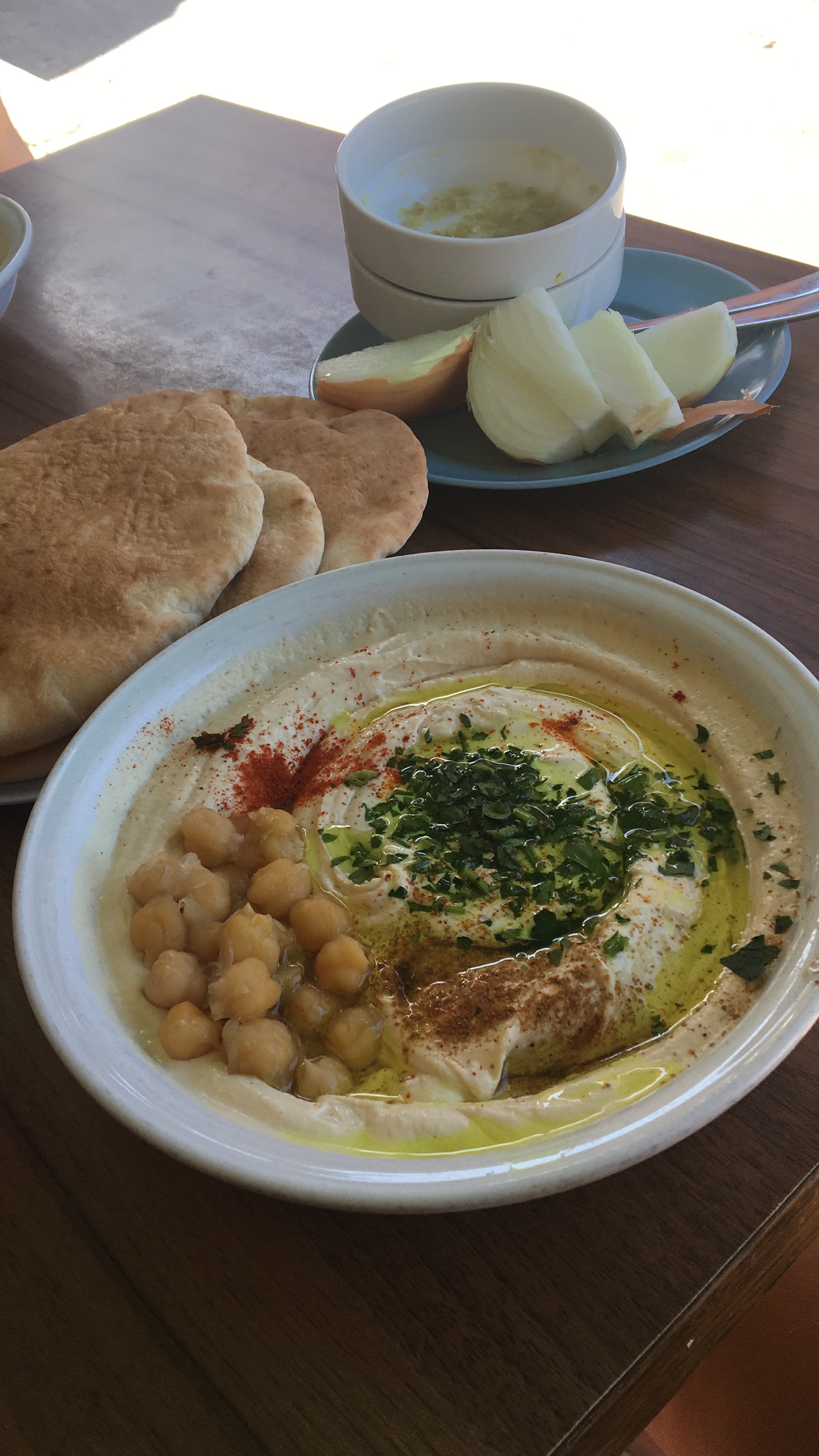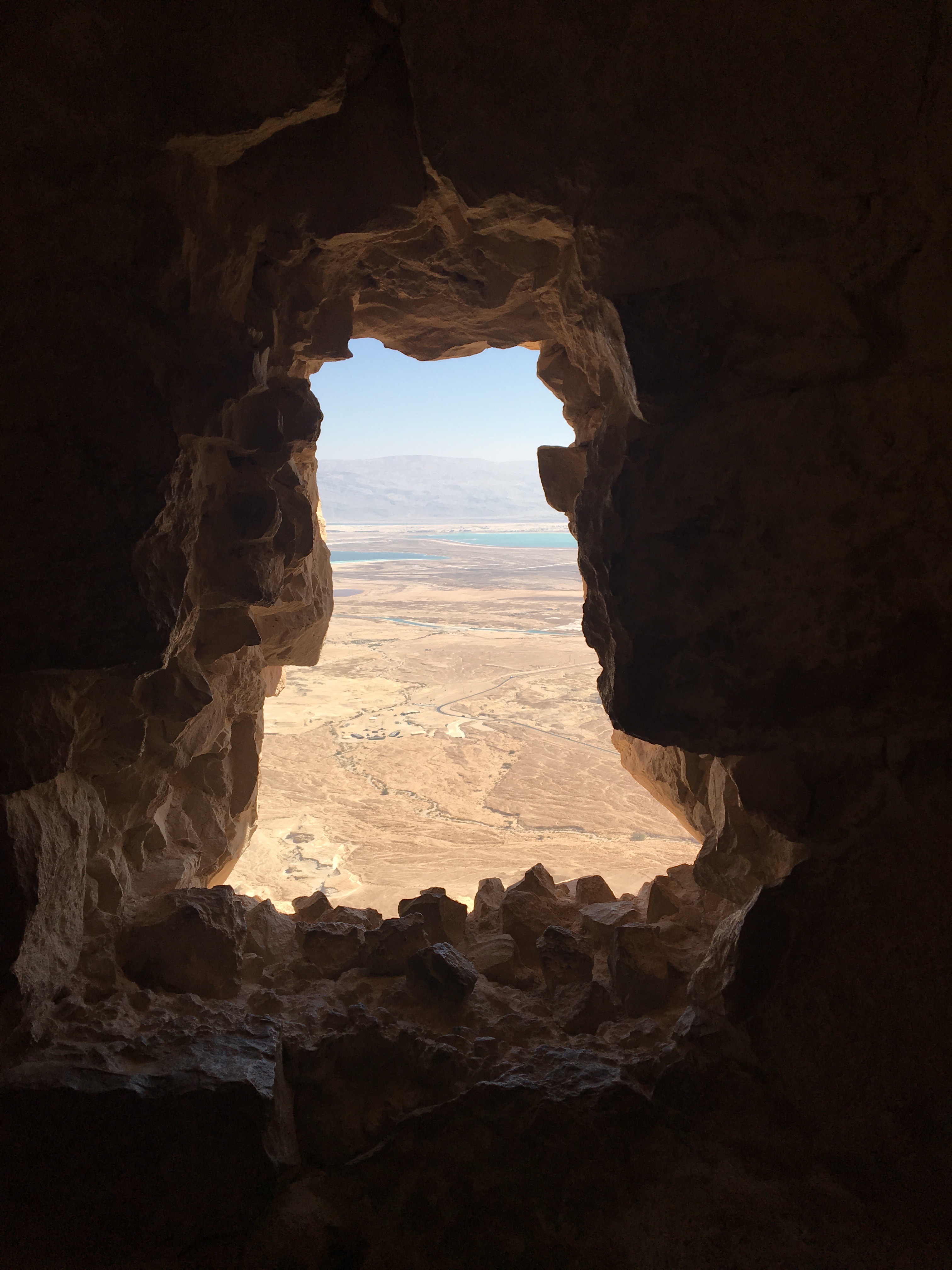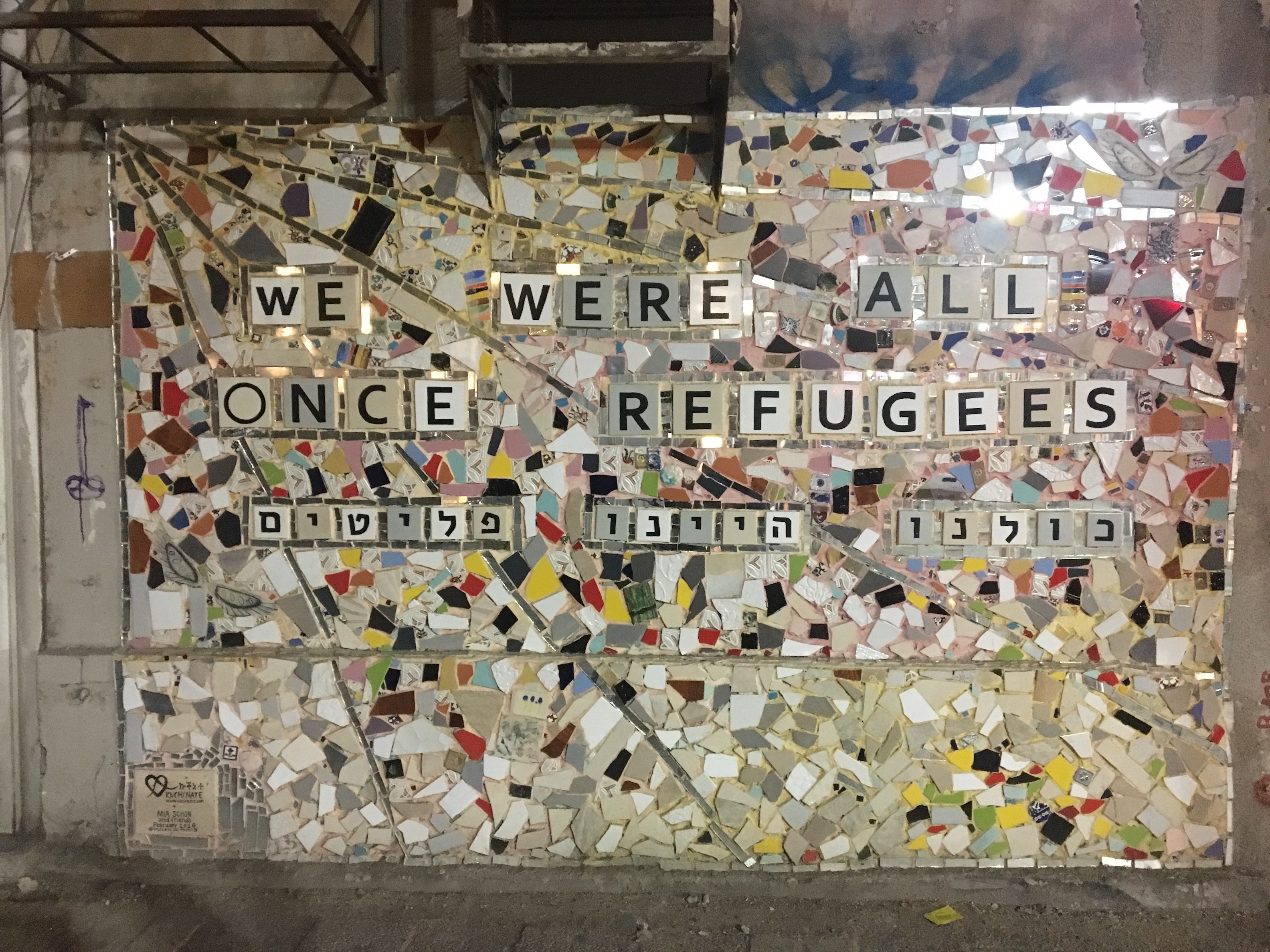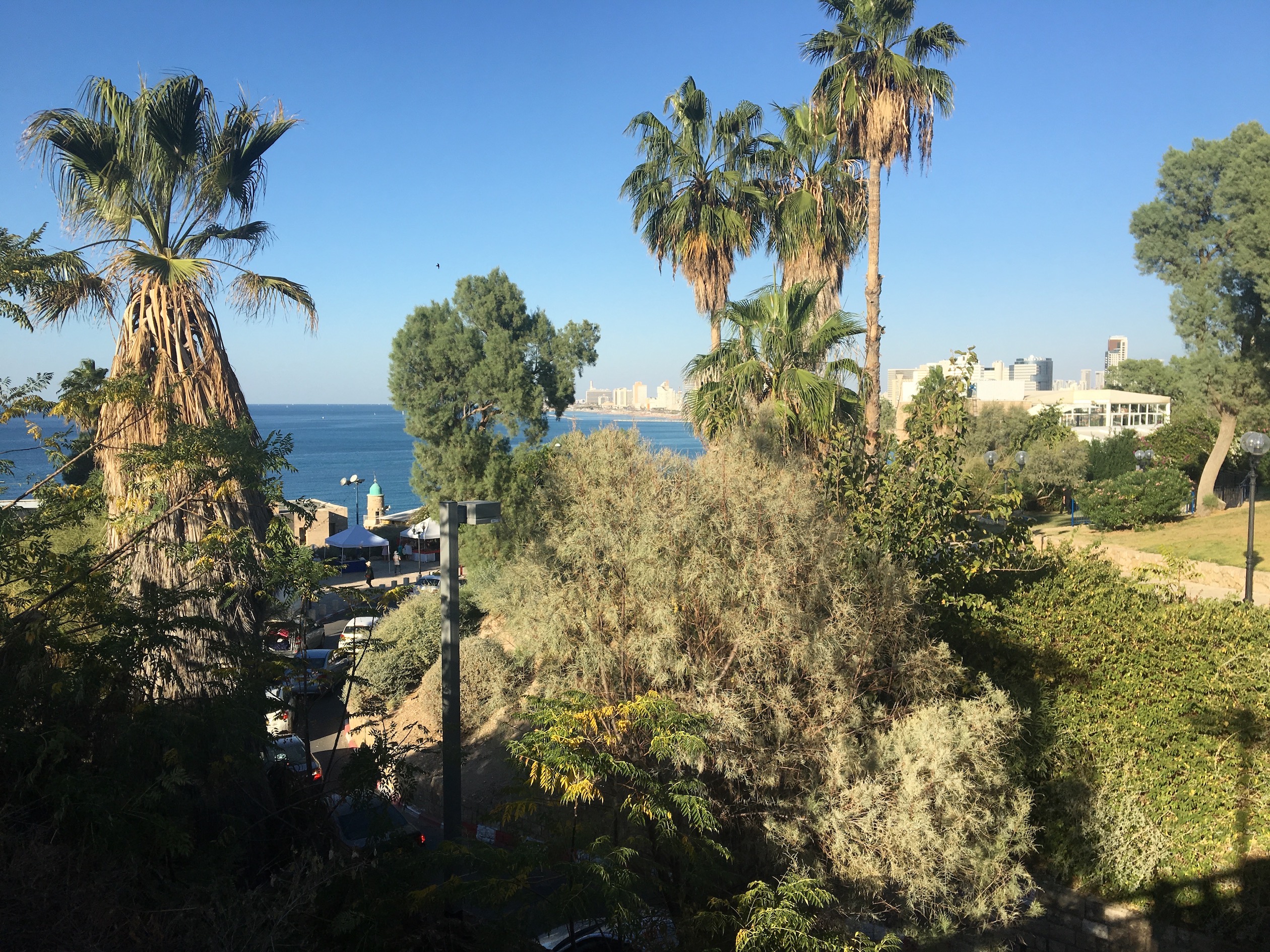“Home” in the Holy Land
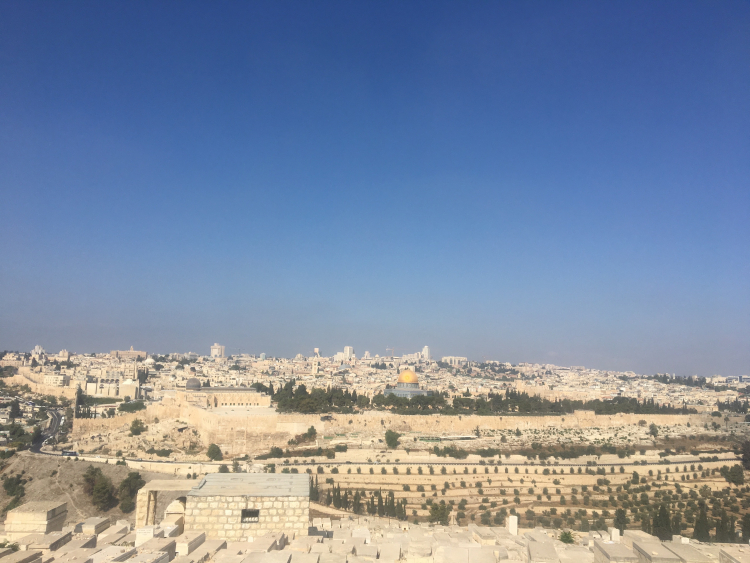
I’ve had the great fortune of calling a lot of places “home.” Moving around from Chicago to Paris to Rome, each city I have lived in has had an immense impact on the formulation of my identity. Yet, very few places I have visited have affected me so greatly to the point where my identity was forever changed. That being said, the one place in the world that did accomplish this was the Holy Land. Everything from watching the unreal orange-and-pink sunsets to walking down the narrow roads of the old city of Jerusalem has stayed with me. The truth is, there’s just something incredibly life-changing about this land that cannot be put into words, but rather can only be told through experiences.
Here, you’ll find two different, yet in many ways also similar, accounts of pilgrimages to, and relationships with, the Holy Land. Mine comes from an American-born interfaith home (reform Jewish and Catholic) background, and the other comes from an American-born Palestinian of Muslim faith.
Sunset at Hilton Beach in Tel Aviv, Image Credit: Jenna GalowichAs an American-born citizen, I was raised in an interfaith of home. A mix of both Jewish and Catholic, I distinctly remember not knowing how to feel that first time that I landed at Ben Gurion International Airport in Tel Aviv. It was a school planned trip and, at the time, I was only 13 years-old, so I didn't expect much of it. All the same, I could of never imagined how much my life and identity would change from the second that I walked off the plane, and was greeted with a sign that read: Bruchim HaBaim L'Yisrael/Welcome to Israel.
I vividly remember walking out of customs with the rest of our travel group. All together, we were a group 48 eighth grade students and teachers. From there, we hopped on a bus to Jerusalem where we would spend a good chunk of time at a hotel on a nearby kibbutz. Our first day was very much focused on relaxing after the long journey, but everyday following was an adventure of exploring faith, religion and the land of our ancestors.
"Welcome to Israel" Sign at Ben Gurion International Airport, Image Credit: Jenna GalowichI had never prayed on my own accord before — any form of prayer was always reserved for our weekly Friday prayer services, the High Holy day and other special occasions such as a B’nei Mitzvah. Yet, standing there, in front of the Western Wall, I took into consideration the thousands of years of history behind it, and what it symbolized to the Jewish people: hope. Throughout all of the destruction and revivals of Jerusalem, the Western Wall is the one thing that stood the test of time. So, even though I was so young, I stood there and prayed. I thought of the strength and asked for strength in the future, and at that moment, I felt it too, hope.
Hand on the Western Wall in the Old City Jewish Quarter in Jerusalem, Image Credit: Jenna GalowichTowards the middle of our “tiyul”, we got up before dawn to complete the long hike up Masada. Masada, an ancient fortress, was the last stronghold of the Jewish zealots in their quest to fight back against the Romans. After the Romans were finally able to create a ramp up to the Masada fortress, the Jewish zealots decided that they’d rather commit suicide than fall to the Romans. Despite the eventual fate of its inhabitants, Masada is an important site for Jews in the sense that it is symbolic of resilience in the face of oppression, which is an incredibly important quality to the Jewish people to this day. Again, although I was young at the time and had not faced any situations that required me to face any real adversity, I knew that there would be a time when I would need the strength and resilience that I could draw from that place in order to survive, so I took everything that I could from the grueling hike up the rocky, tan ancient fortress and all of its history and put it in my heart, where it would stay safe until I needed it.
Masada Fortress, Image Credit: Jenna GalowichWe ended the trip with a nice dinner at a restaurant in Tel Aviv, where we all recounted our highlights of the trip, and how this trip had shaped our identity as Jewish children, as well as how we intended to incorporate Judaism into our lives after we graduated. The truth is, I didn’t have an answer then. What I did know, though, is that the Holy Land left an imprint on my heart and that I was leaving with a yearning to return someday. Right before we left Tel Aviv to get on the bus and go to the airport, I made a pact to myself while I was staring out into the night sky over the Mediterranean: I would return to the Holy Land after I had used up all of the hope and resilience that I could muster up while facing the inevitable challenges and curveballs life would throw at me. I didn’t know when that would be, or what it would look like, but I knew that it would happen when it was meant to happen. This was the beginning of a long journey that I had ahead of me.
Fast forward six years later. I have gone through my fair share of trials and tribulations, and I’m starting to feel as though I’m running low on hope and the resilience to keep on fighting. While I found my Jewish background to be a huge part of my culture and my identity, I had slowly but surely stopped going to synagogue, other than for Yom Kippur, the holiest of the High Holy days. Not only did I have very real concerns about facing anti-Semitism if I were open about my Jewish heritage, but I also became completely disenthralled from organized religion overall, as I began to blame it for a lot of the world’s problems. I decided to take a semester away from my university in Los Angeles and study abroad in Rome. For me, Rome in itself was a pilgrimage, having been born into a deeply Italian-American family on my mother’s side. It was spiritually-fulfilling to come home to Italy, a land where I felt at home in the lush green hills, the madness in each piazza as large groups of tourists mix with locals, and the aroma of fresh pizza wafting throughout the air.
My dad had been planning on visiting me while I was in Rome, and he wanted to go to another place with me. While discussing potential getaway spots, my dad mentioned that he wanted to return to Tel Aviv and Jerusalem and since the Holy Land is so close to Italy, why not do that? I was brought back to my promise that I made to myself, that I would come back to the Holy Land when I needed to regain my hope and resilience, and this seemed like the universe’s way of telling me, no, forcing, me to go back. This was my time to take on a whole new meaning and experience of such a sacred place.
I landed very late in the evening, or rather early in the morning, and immediately took a taxi to my hotel. Upon arrival, I was greeted with a glass of Israeli red wine, so I went up to the terrace and decided to take a look at a place that had always been so close to my heart, yet so far away in distance. Looking at the landscape of Tel Aviv at four in the morning, I felt something so special in my heart. A felt a sense of peace and comfort that I had been craving for years, something that not even a place like Italy or the United States could provide for me. I felt a melange of emotions: safe, curious, hopeful, happy, comfort, but most importantly at peace. At peace with myself, with my past, with my present, and with my future. I had finally fulfilled my promise to myself, and couldn’t wait to see what this new experience had in store for me.
Although this trip was short, only four days long, it was just enough time to rejuvenate my spirit. Between dancing the night away in infamous Tel Aviv nightlife spots such as Shalvata, Jimmy Who, and Kuli Alma, eating the greatest hummus in all of Tel Aviv (Abu Hassan, for anyone who wants to know), and finding my happy place at Hilton Beach, my father and I paid a visit to the Old City of Jerusalem, and I went back to the Western Wall. This time, I cried. A lot. And if you know me, that’s a pretty rare thing for me to do, let alone in a public space. But something about the Wall makes me feel so comfortable and at home, that it felt like I could cry there. It felt almost like a relief to let out all these emotions in a place that felt so safe and sacred to me. There were also some happy tears mixed in there because for the first time in a while, I finally felt some little glimmer of hope inside of me. A little glimmer that I wasn’t going to let go of. But something was missing, and that was a little fuel for my resilience.
Hummus & Pita Plate at Abu Hassan in Tel Aviv, Image Credit: Jenna GalowichLess than a year later, this past September, I came back to Tel Aviv for a family event. While this trip was a bit longer, this time, we had the opportunity to go back to Masada. This was at the beginning of my senior year-- the last year of my academic career (well, for now at least)! I knew I had to go into it with a lot of strength and resilience to push through the greatest challenge that I had to overcome: being okay with the unknown. Although I didn’t get to make the climb this time, hearing our tour guide recall the story of the Jewish zealots that inhabited the fortress thousands of years ago somehow seemed to be more powerful to me than it was before. Part of it was that I was able to take all of the events that had occurred between when I first visited and now, and apply it to my own life. But another component was that I was able to relate it to my own Jewish background and identity. This time, when I left the Holy Land, I left feeling stronger, more hopeful, more resilient and at peace with the idea that no matter what life throws at me, I can not only handle it, but I can succeed too.
View from the Masada Fortress, Image Credit: Jenna GalowichThe Holy Land is home to not just me, or the Jewish people, but also to many other people. And anyone who knows me knows that no matter what my beliefs are, I will always listen to and give a voice to every stakeholder in any given situation, and this is no exception. I had the opportunity to speak with an American-born Palestinian, Ahmed, whose father was born in Jerusalem and also grew up in Hebron and eventually immigrated to the United States. Although his story differs quite a bit from mine, in many ways, there are also many sentiments that are shared with respect to our connection to the Holy Land.
Ahmed grew up having spent two summers in the Holy Land with his family and went years without going back due to inter-familial conflict. After that, he was able to return for two to three weeks for a wedding the summer after his sophomore year of university, and for a week in November of 2018. When asked what makes the Holy Land feel like home to him, his response was “how welcome he feels when he goes back”. He then elaborated on this and said that the “people and the culture are so welcoming […] Like I will have not been there for years and years and no matter what or that I’m half white or American it’s literally like open arms always”.
That being said, it’s not always easy for Ahmed to return home. Upon arrival at Ben Gurion International Airport, he explained to me that he has been pulled aside upon arrival and when departing, where he is questioned for hours by Israeli guards and his belongings searched through extensively (sometimes his belongings are broken during this process). Despite this, though, he feels incredibly lucky and privileged to have an opportunity to come home, since many other Palestinians are denied entry into the Holy Land. His father, who was born in Jerusalem, wanted to attend a university in Egypt and study to be a doctor or engineer but was informed that if he left to do so, he would never be allowed to re-enter ever again. To this day, he can only ever gain entry by using his American passport to enter.
An experience that stuck out in Ahmed’s mind as being an especially memorable one is when he was able to return to the Holy Land for a wedding after his sophomore year of college. He had begun studying the Arabic language and was thrilled to have an opportunity to apply what he had learned during his visit, only to realize that a large majority of the people he encountered were not able to speak Arabic with him. During this trip, his father also drove him around Jerusalem and pointed out a place that he identified as being the place where his grandmother lived. When asked about what happened to it, his father explained that settlers came in and took the land away from them. At this moment, Ahmed felt sadness more than anything else–he had come to the realization that there was nothing that he, or other Palestinians he knew of, could do to get their land back. But at the same time, he also took so much pride in and draws so much strength from the resilience of the Palestinian people.
"We Were All Once Refugees" Mural in Tel Aviv on Allenby Street, Image Credit: Jenna GalowichIt is because of this grueling and emotional process that whenever Ahmed does get to make the pilgrimage home, it is that much more rewarding for him, and his pride in his Palestinian roots is strengthened.
My hope is that by sharing these two accounts, it will become clear that this place cannot be reduced to whatever one sees on the news about it, whether that be the ongoing Israeli-Palestinian conflict or the controversial “peace plan” drawn up by the American and Israeli governments. This land is far more than that. It is a place that is spiritually-enriching and welcoming to anyone and everyone who is open to it.
View of Tel Aviv from the Old Port in Jaffa, Image Credit: Jenna Galowich
Certain names in this story have been changed.

